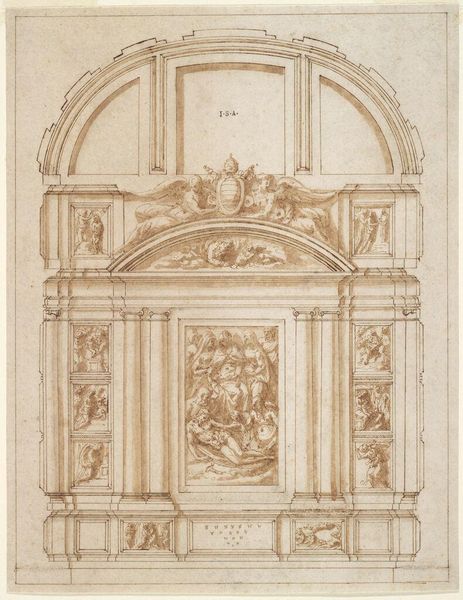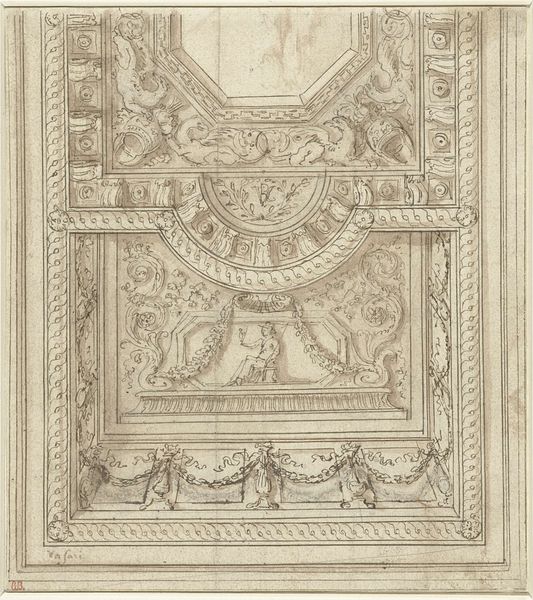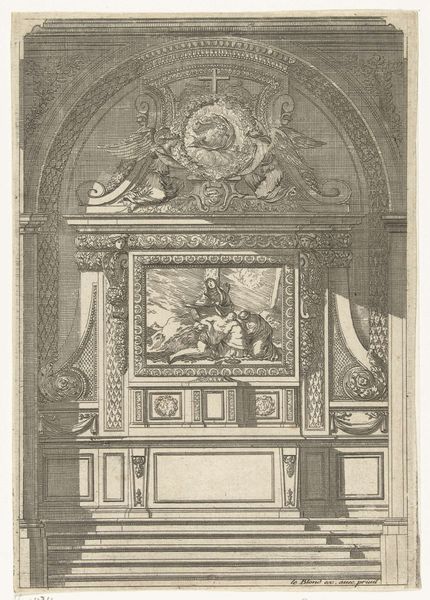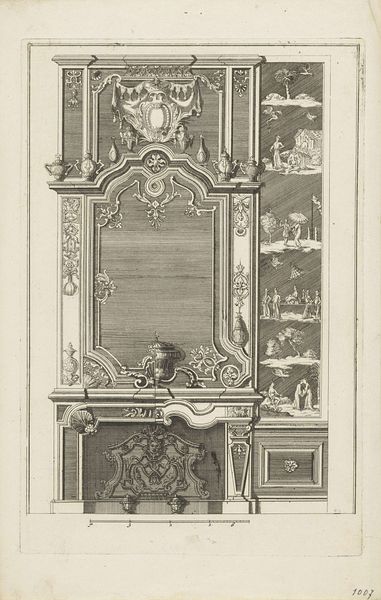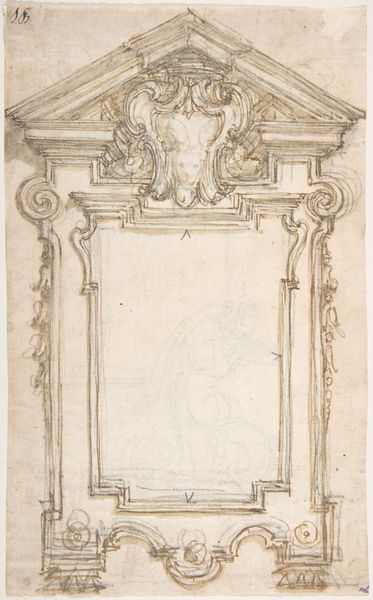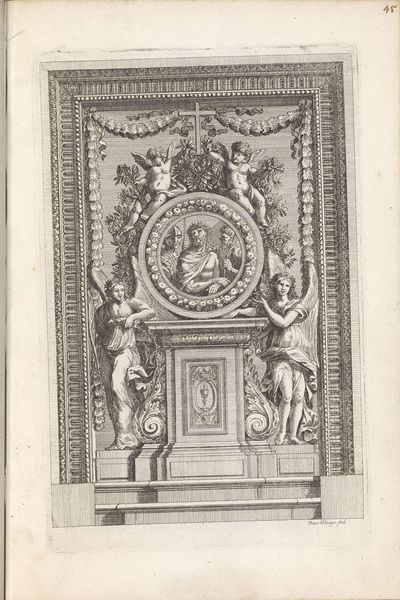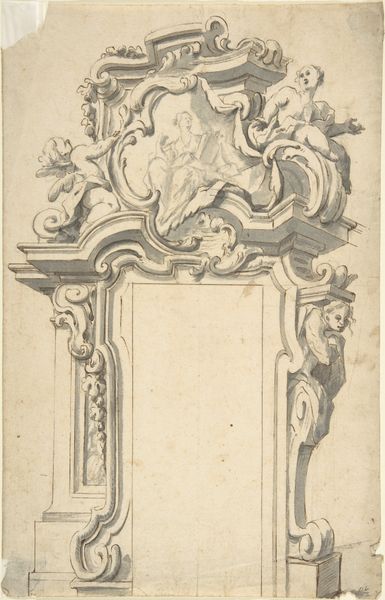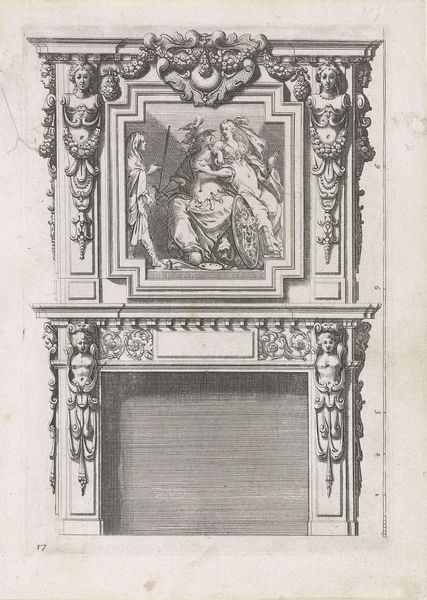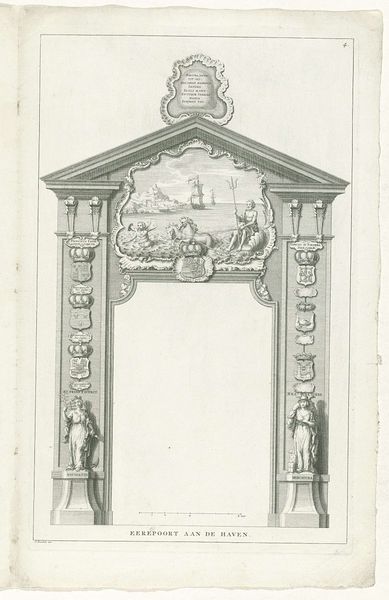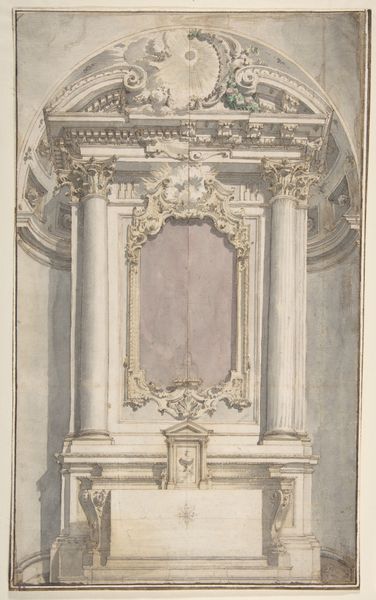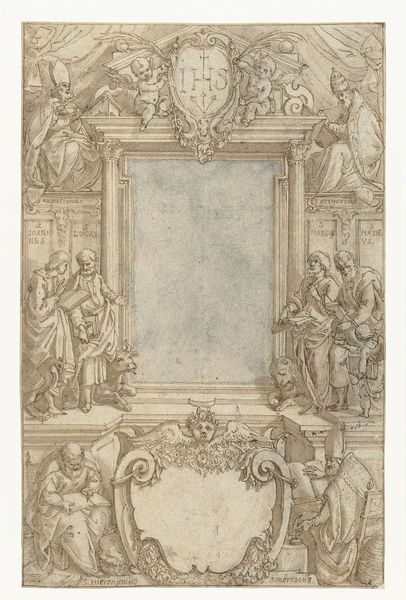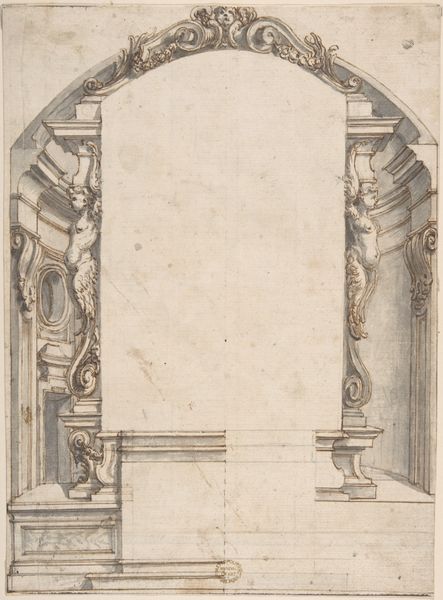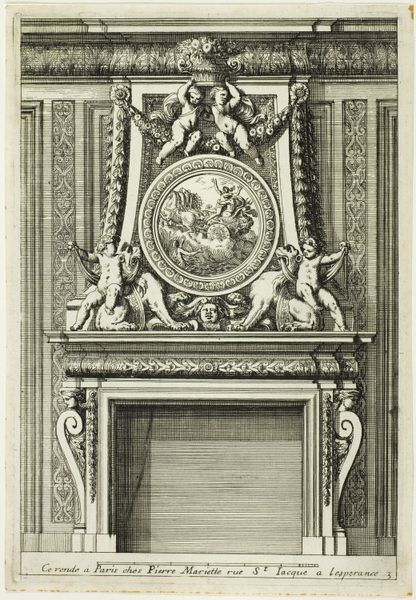
drawing, paper, ink
#
drawing
#
aged paper
#
toned paper
#
light pencil work
#
allegory
#
baroque
#
pencil sketch
#
old engraving style
#
figuration
#
paper
#
personal sketchbook
#
ink
#
pen-ink sketch
#
pen work
#
sketchbook drawing
#
sketchbook art
Dimensions: height 188 mm, width 152 mm
Copyright: Rijks Museum: Open Domain
Curator: Let's take a moment to appreciate this drawing, "Cartouche Surrounded by Putti," created between 1600 and 1604. It’s currently held here at the Rijksmuseum. Editor: It gives the impression of a framed void, an absence around which cherubic forms frantically coalesce, as if yearning for meaning. The monochromatic palette feels inherently academic, a study, perhaps. Curator: It's compelling to consider this drawing as a reflection of the tumultuous times in which it was created. The elaborate frame hints at the societal pressures placed on artists to create grandiose works for religious or aristocratic patrons. The putti themselves, typically symbols of innocence and divine love, take on a slightly anxious demeanor in this context, almost as if they're desperately trying to fill a void, a lack. The cartouche suggests not merely a frame for artwork, but for social structure. Editor: Indeed. Consider the interplay of line and form. The artist masterfully uses the limited tonal range to create a palpable sense of depth. The cherubs' poses, while seemingly casual, adhere to a strict Baroque sensibility of dramatic tension and dynamic equilibrium. The formal restraint is fascinating when juxtaposed with the implied dynamism. Curator: And consider how such preparatory sketches also offer a critical lens into the culture of the period—serving as both design blueprints and exercises for greater works. It speaks volumes that a sketch such as this might also allow Terwesten greater artistic expression through subversive commentary. Editor: Perhaps it's more a playful dance of presence and absence, of containment and liberation. Curator: The symbolism resonates even now, hinting at art's role in mirroring humanity’s endless yearning and occasional frustrations, and our struggle to assign meaning to spaces and identities both imagined and imposed. Editor: I leave with the understanding of composition, a deeper knowledge of space in the drawing and mind. Curator: The drawing offers a silent narrative, one open to both personal and societal readings for anyone willing to look.
Comments
No comments
Be the first to comment and join the conversation on the ultimate creative platform.
